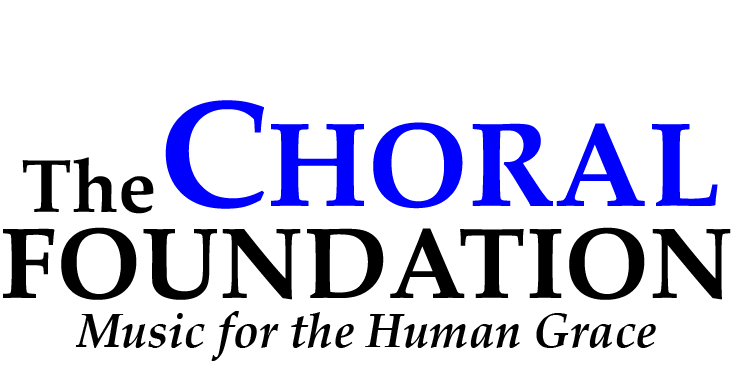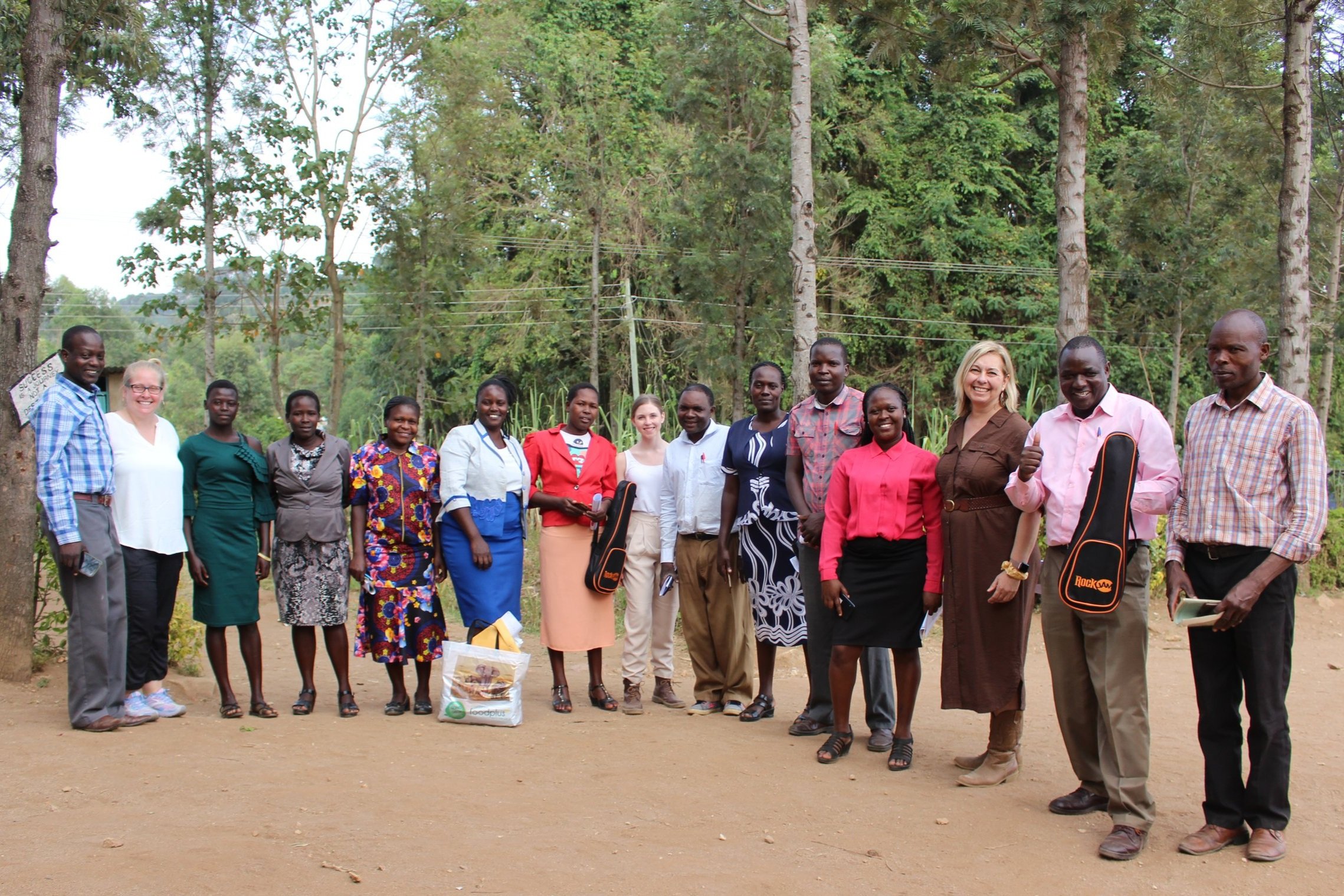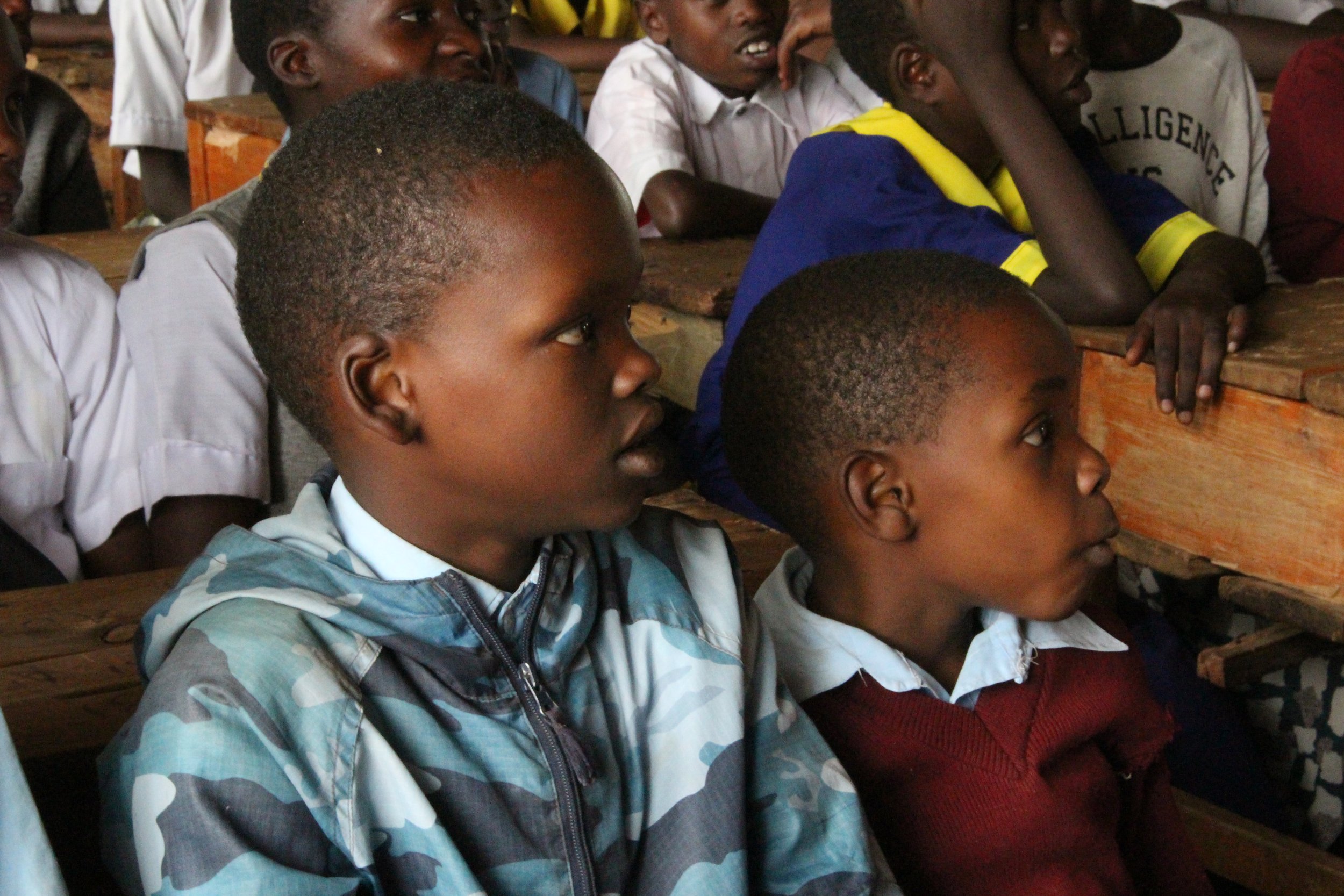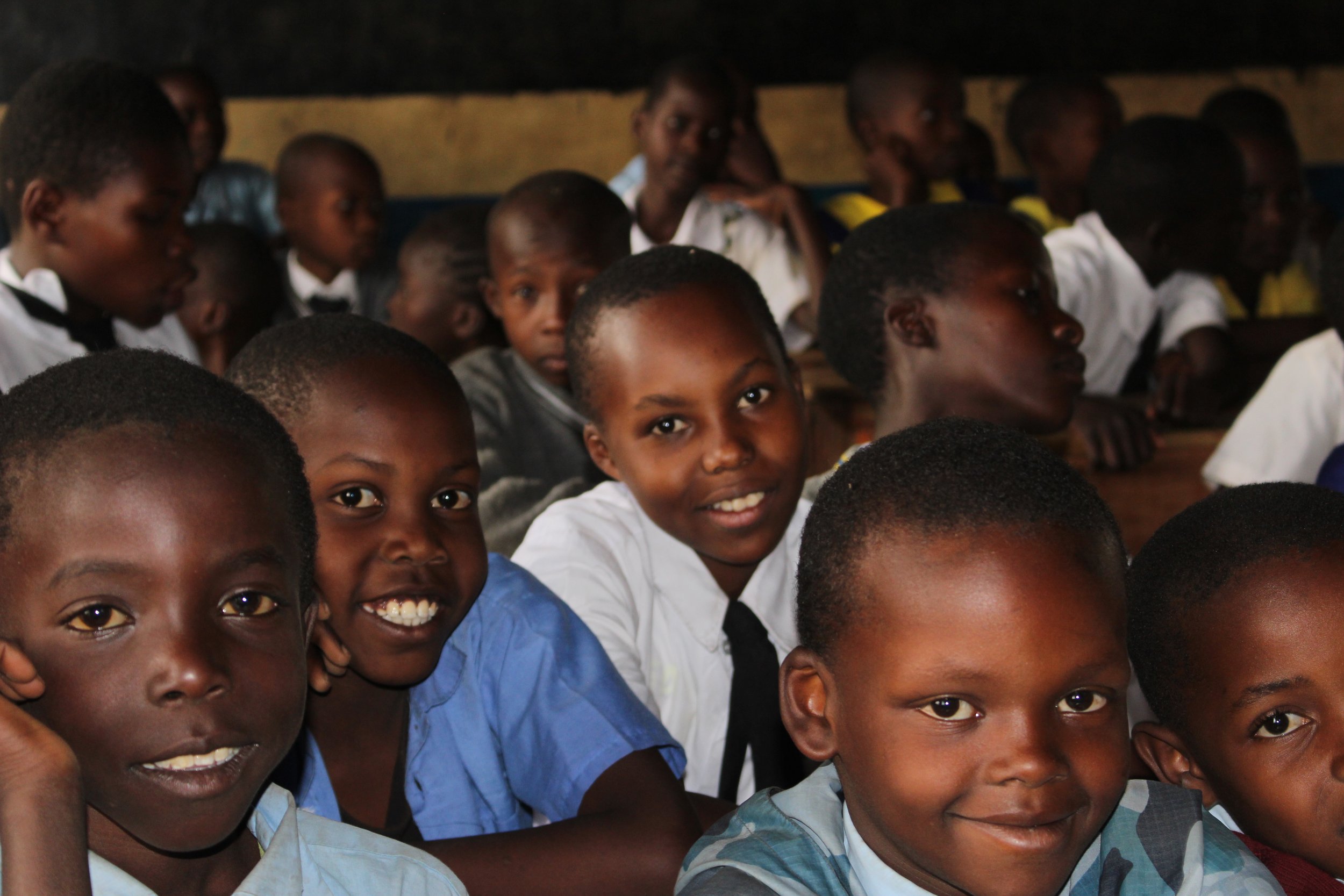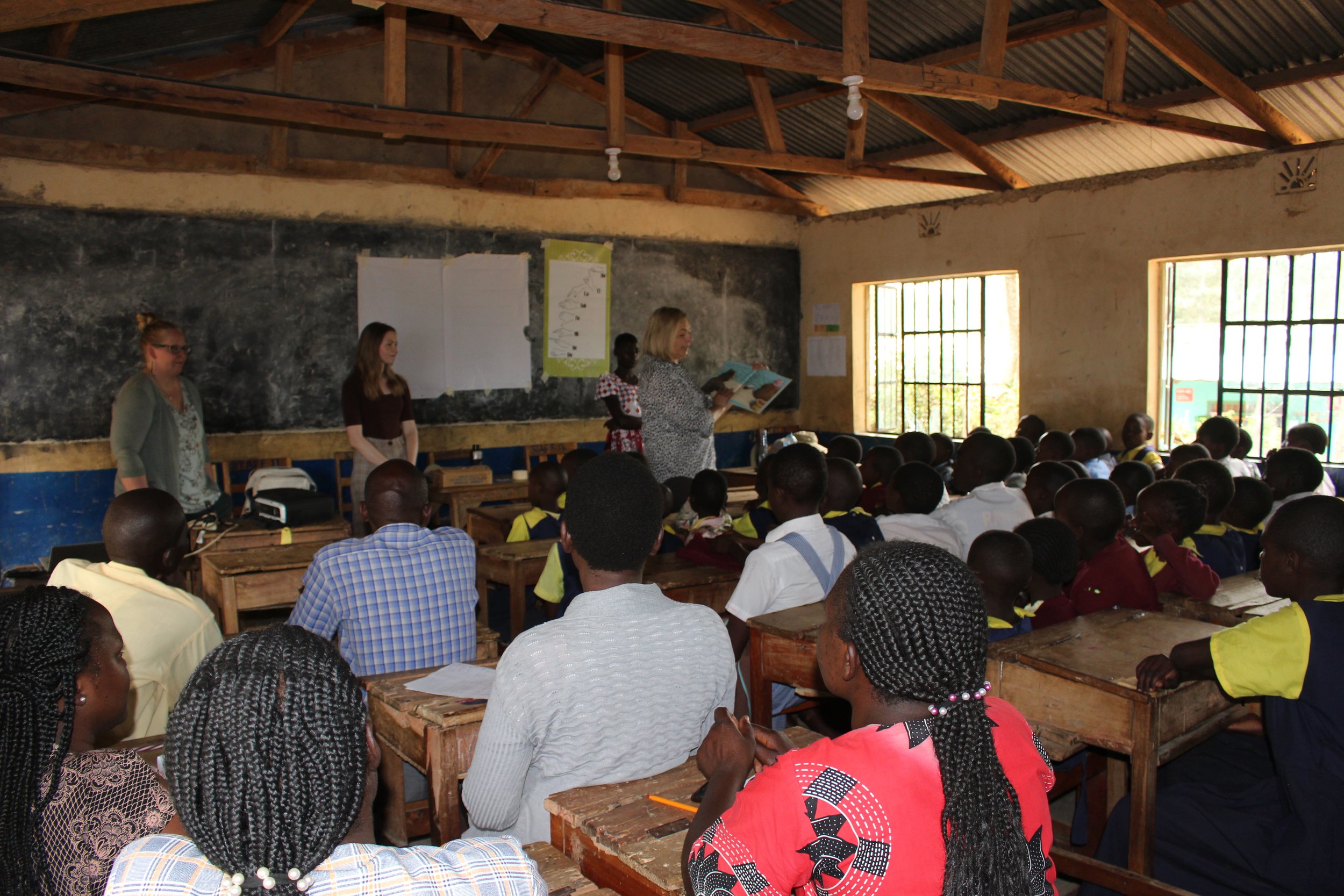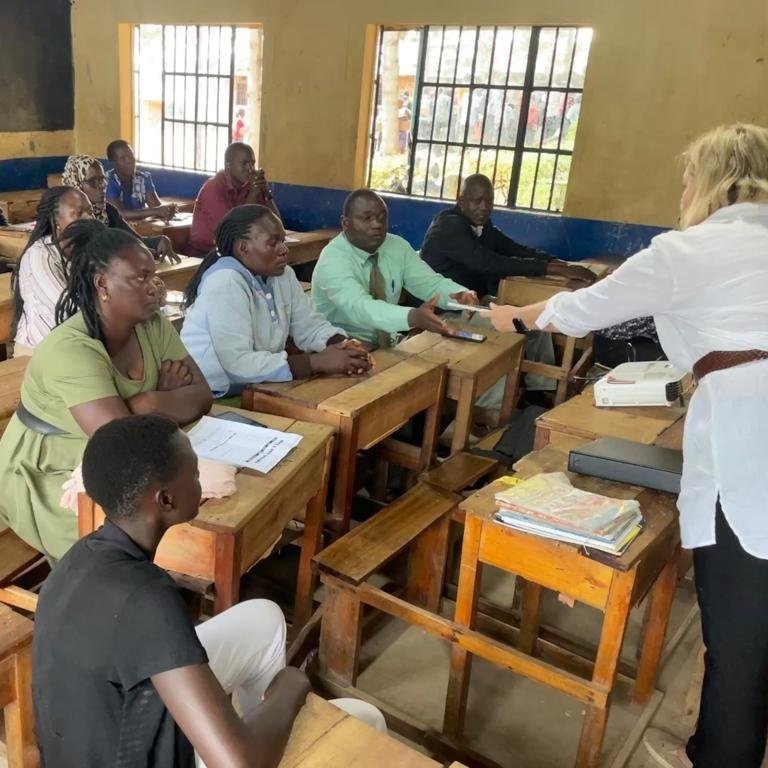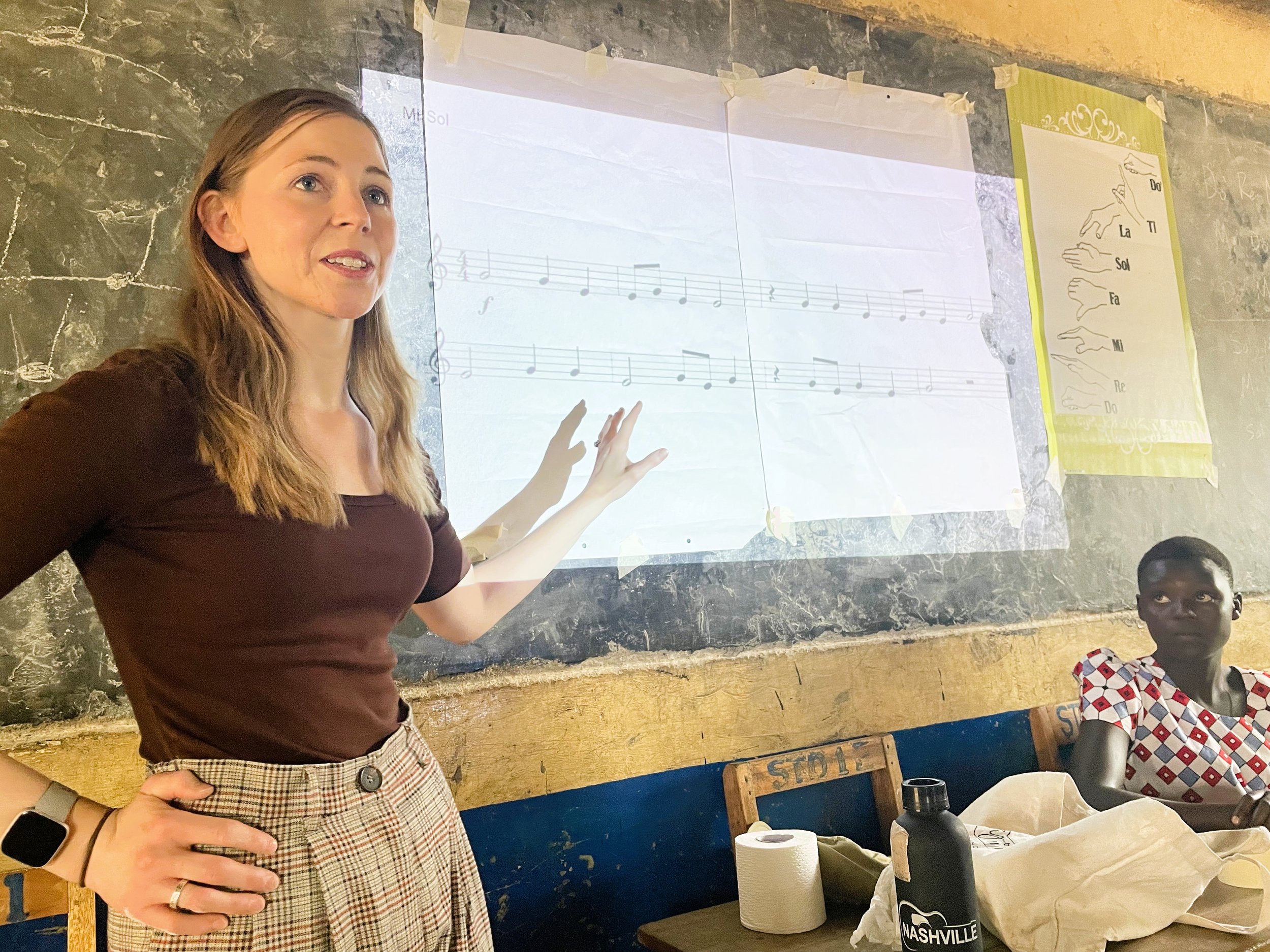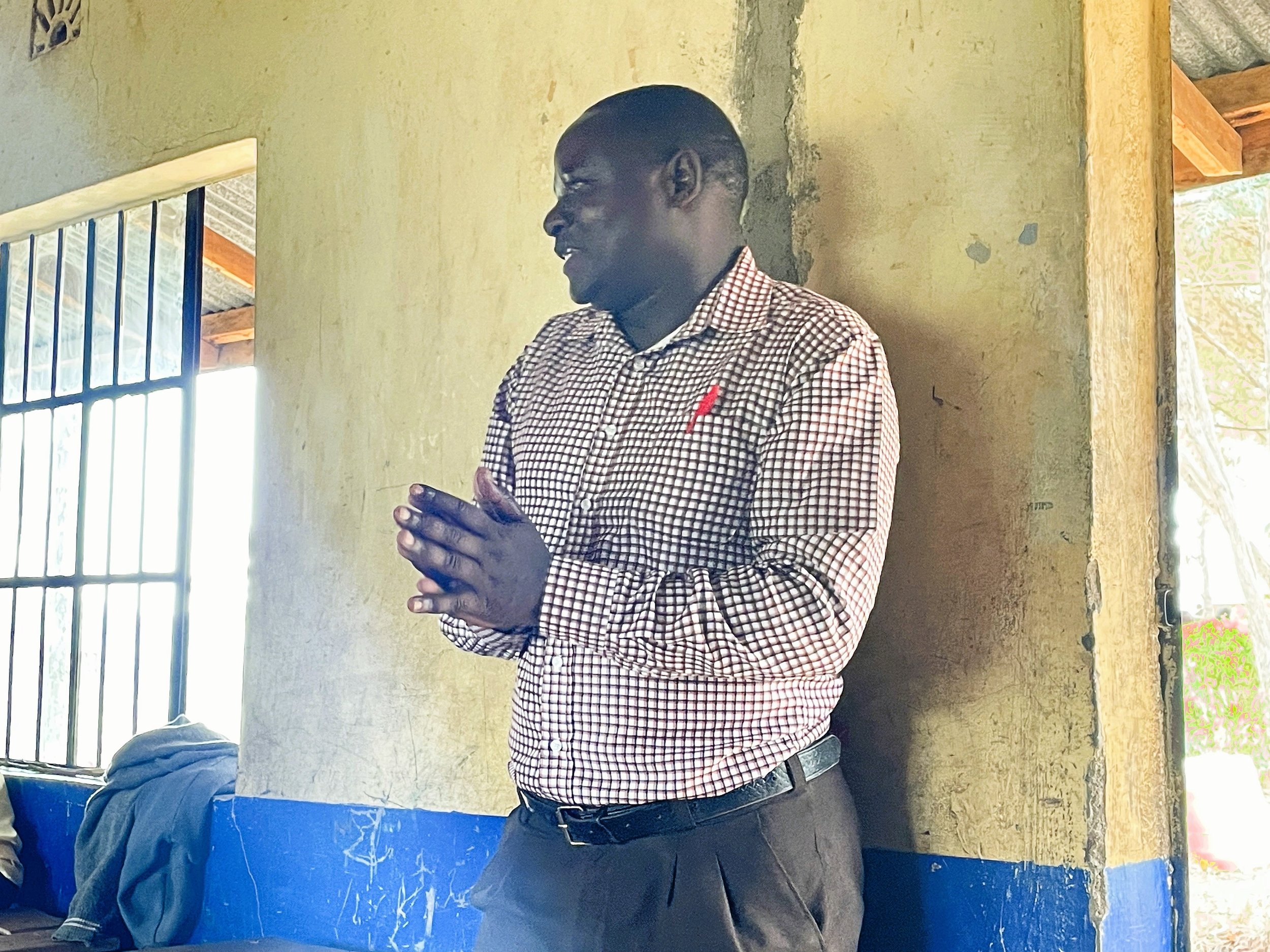Edited by Jamea J. Sale, PhD
Meeting the Kapkemich Primary School Teachers
The teachers of Kapkemich Primary & Secondary School
Our first meeting with the staff of Kapkemich Primary School felt like familiar territory to us. Everyone was extremely kind and welcoming, especially Wycliffe Isatia, the principal. There were introductions and pleasantries, but I was also aware of side conversations and quiet, concerned glances across the room. I could well imagine the teachers might be a bit frustrated about sitting in a meeting when they likely had many other things to accomplish. They may have worried that we would impose extra demands on their already packed schedules. This reaction was not all that different than I’d expect from the teachers in my own Overland Park, Kansas school a whole continent away, and it was comforting to see that their reactions were similar to what might manifest among my colleagues at home.
Wycliffe began by introducing the teachers, pointing out four who had an interest in music: David, Lydia, Oscar, and Rita. Rita, said she loved music and dancing but could not sing. Oscar was shy but clearly had musical knowledge, while Lydia and David seemed enthusiastic. The other eleven teachers were reserved and possibly even skeptical. We asked many questions they hesitantly answered. Nonetheless, by the meeting’s end, we better understood what the teachers needed from us.
The Exhilaration of Day One
Monday, March 6, we began teaching, which was exhilarating. Our routine was first to lead a group of children in a lesson. Around 80 students from grades 2-6 came to the classroom, while about 15 teachers from grades 4 to 6 observed. We introduced vocal exploration, beat embodiment, story songs, echo singing, pitch matching, and music games, all put together to excite the young learners and begin introducing early concepts in music reading.
The children were extraordinarily excited to engage in the experience and wanted it to last longer. However, we had to bring the lesson to a close so that we could begin instruction with their teachers. We started by explaining what we had done and how the lesson was structured, basically “pulling back the curtain” on our instructional design and providing a template for the teachers to plan their lessons. We carefully selected a structure known to be successful and that could support any musical activity the teachers might have access to for teaching Kenyan cultural music.
Our second task was to provide a baseline in music literacy (rhythm and note reading) so that the teachers could feel comfortable teaching music to the students. Christine led an introductory rhythm reading lesson following the mantra: experience it, create with it, see it, and write it. Hesitant and shyly looking at each other, the teachers initially seemed awkward about participating. But then, something clicked, and they realized they could understand rhythm. They were so fired up! Next, Niccole introduced sol-fa, and they caught on quickly. The energy in the room was completely different and thrilling. Smiles emerged, and the teachers were having fun.
Realizing Our Purpose
At the end of our session, Wycliffe Isatia requested someone speak about what happened during our time together. (We later understood that such a summary and expression of appreciation is customary.) Rita stood, saying, “I always thought I could not sing or do music, but now I think that I can, and I am excited to Google more about it tonight!” It was an incredible moment for us as teachers. Rita embraced that she could sing and teach. Changing a person’s belief in themself and exciting them about teaching music has been our purpose all along. To have such a change happen so quickly overwhelmed our hearts.
Each of these beautiful teachers gifted us with their trust and openness, and we are deeply grateful.
